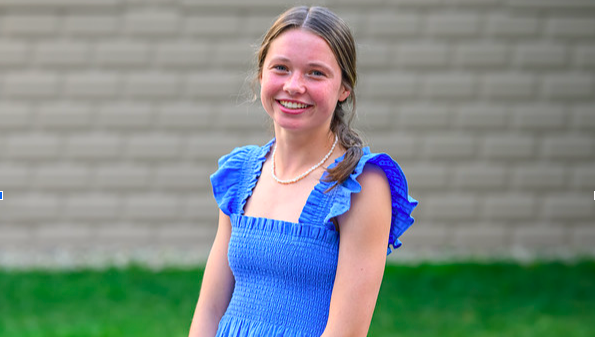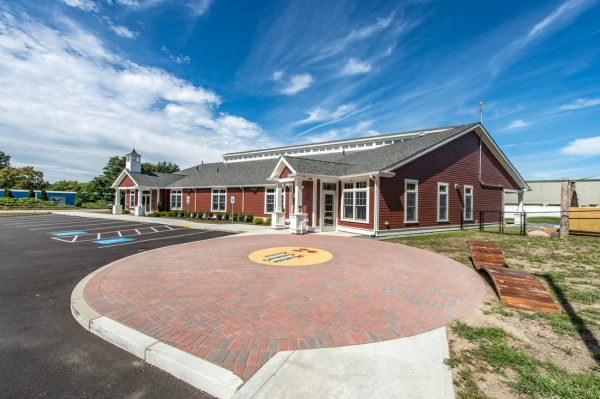Is there a deeper meaning behind why we abhor the wall color change?
Ms. Lechner, along with her French 3 students, enjoy class in a newly-painted Room 14.
Let’s be honest, the color scheme has never been spectacular at Montrose. Whoever thought: “ We should do yellow, green and purple,” and then proceeded with that idea holds an interesting sense of taste. In no context do those colors go together, unless, of course, they were going for a Barney theme. But I am not here to judge; I am here, in fact, to express my sorrow that those colors I have grown to know so well are slipping away from my grasp every time I come back from a break.
Over the years, I have noticed my growing anguish at the change in the wall color. Particularly coming back from Christmas break this year, I felt the need to bring it up pretty much every other minute. If you take a step back, in the long run, complaining about the new wall color of a school is a sort of trivial thing to spend your time protesting. It’s not supposed to matter that much, is it? People complain about unnecessary things all the time, and it seems that this would be another thing to add to the list. I do not know the middle schoolers’ thoughts on it or if they even noticed, which I’m sure they have, but I bet that they aren’t complaining about it as much as upper schoolers I’ve talked to. They may just feel a slight aversion to the new blank look of the white. My mind lingers on why students, particularly upper schoolers, feel a repugnance towards this change.
I have to admit, although it was strange, my heart sank the first time I noticed the poles in the upper school hallway were blue and not their traditional green that I had grown up looking at and walking into. The paint may or may not have been chipping off, an update overdue, but why change the color? I’m sure whoever made that decision didn’t think too much about certain people’s personal attachments to the pole and wall colors, but it pains me all the same.
While pondering these convictions, I came to the realization that it is because, in a way, we grow attached to them. Change rivets people’s minds away from what they are used to, what they have grown to know. But it is not change alone that alters people’s emotions. There is so much more to it than the new color disorienting us. We spend on average just under two thousand hours a year at school, and yes, I did the math. In case those numbers mean nothing to you, that’s a lot of waking hours spent in one place. I have spent almost seven years at Montrose and can say I have had at least one class in every classroom, apart from the Spanish room (Taking Latin is just as justifiable as taking Spanish or French, so do not let yourself be bullied out of it).
When I imagine all the memories and hysterical events that have happened throughout the years, the joy I felt from these experiences will travel with me throughout my life. When I see the rooms and the halls, I see flashbacks from those times.
But then, I come back from a break, and the room is a different color. Some furniture is moved and my heart along with it. I feel like a part of those memories slips away forever even though the physical room is still there.
So this, this is why my heart falters when I walk in a room and see a beautiful new accent wall. It is beautiful. It is fresh and new. It may add a sense of excitement to the room. But nevertheless, the new coat of paint puts a glaze over all the memories.
But it is time to move on and let go. For the younger girls, this will be the Montrose they know, the walls they grow up with, and the ones that will make them sad to see painted over in years to come. They may not get it now, but no matter their experience the next few years, hard but well worth it, there will be times when they look back on the rooms and all the memories.
By Ava Ryan ’23, Faith Editor
23aryan@montroseschool.org















